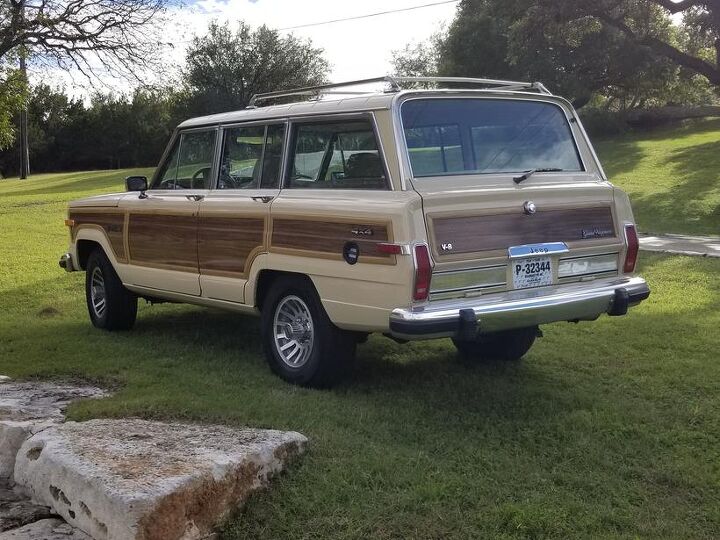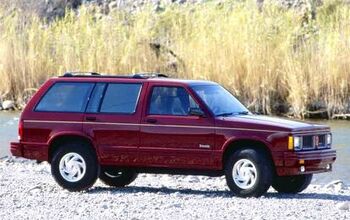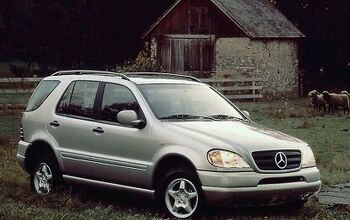Buy/Drive/Burn: Very Expensive Luxury SUVs From 1990

Our last couple of Buy/Drive/Burn posts covered two different flavors of compact Japanese SUVs from the 1990s. Today we branch out and review larger, luxury-oriented SUVs hailing from places other than Japan.
Twelve miles per gallon? That’s plenty.
Rayton Fissore Laforza
Our most exotic competitor comes first today. As covered in Rare Rides previously, the Laforza was first available in the United States in 1988. Called Magnum elsewhere, the Laforza was based on the military-spec Iveco VM 90 truck. Manufacturer Rayton Fissore loaded the Magnum with Italian leather and wood paneling, swapping smaller European-spec engines for a familiar 5.0-liter Ford (302) for Americans. The AOD transmission sends power to a selectable four-wheel drive system. It’s expensive and exotic, and you’ll be the only one with a Laforza at the golf club. Have it serviced wherever your maid takes the Sable wagon.
Land Rover Range Rover
The Range Rover was well-developed by 1990, having started production back in 1970. British Leyland planned to introduce the Range Rover to North America at the beginning of its life, but they were too poor. However, that didn’t stop some dealers in Los Angeles from peddling Range Rovers to eager customers in Orange County and Hollywood in the early Eighties. In 1984, Aston Martin started selling them in Connecticut. The Rover Group was back in England getting their act together, and when Lucas fuel injection replaced the old carbs, the Range Rover suddenly became U.S.-compliant. It launched in the spring of 1987, and a year later some 65 Range Rover dealers served American customers. For 1990, the 3.5-liter Rover V8 increased in size to 3.9 liters. The robust Range Rover will get you to and from the horse paddock more than two of the five times you attempt the journey.
Jeep Grand Wagoneer
The elder statesman and traditionalist option brings up the rear of today’s trio. Not known for excessive flash, Kaiser Jeep began production of the Wagoneer in 1963. That company folded into to American Motors in 1971, which improved and added luxury and refinement over time. AMC brought a new Grand Wagoneer to life in 1984. Chrysler took over the reins in 1988, continuing production through 1991. Unlike the other two, the Grand Wagoneer had full-time Quadra-Trac four-wheel drive — no bothering with selectors. Fit and finish increased for the final three years of production, and there was even a standard remote control for keyless entry. The venerable 360 V8 was the only engine available, and wood exterior trim was non-negotiable. The Grand Wagoneer hauls the family with just the right amount of American pretension.
Three big, thirsty luxury trucks from the dawn of the luxury truck era. Which goes home with the Buy?

Interested in lots of cars and their various historical contexts. Started writing articles for TTAC in late 2016, when my first posts were QOTDs. From there I started a few new series like Rare Rides, Buy/Drive/Burn, Abandoned History, and most recently Rare Rides Icons. Operating from a home base in Cincinnati, Ohio, a relative auto journalist dead zone. Many of my articles are prompted by something I'll see on social media that sparks my interest and causes me to research. Finding articles and information from the early days of the internet and beyond that covers the little details lost to time: trim packages, color and wheel choices, interior fabrics. Beyond those, I'm fascinated by automotive industry experiments, both failures and successes. Lately I've taken an interest in AI, and generating "what if" type images for car models long dead. Reincarnating a modern Toyota Paseo, Lincoln Mark IX, or Isuzu Trooper through a text prompt is fun. Fun to post them on Twitter too, and watch people overreact. To that end, the social media I use most is Twitter, @CoreyLewis86. I also contribute pieces for Forbes Wheels and Forbes Home.
More by Corey Lewis
Latest Car Reviews
Read moreLatest Product Reviews
Read moreRecent Comments
- Olivehead The Honda Civic wins on looks and interior material quality and style. The Civic looks like a scaled down "real" car (i.e., midsize) while the Corolla never lets you forget what it is-a compact car, harkening back to the Tercel, etc. No comparision either in the interior materials of the Civic (a notch below Acura level) and general layout. There too, the Corolla comes off as a compact runabout. The Civic hatchback is especially cool.
- Mike Beranek While the product may appear to be "better", only time will tell. The American automotive environment can chew a car up and spit it out. Will these Chinese EVs survive like a quarter-century old Cavalier, or will they turn out like VinFast's "cars"?
- Mike Beranek This police vehicle will be perfect for when the State of Florida starts tracking every pregnancy.
- Dave M. The Highlander hybrid, a larger, heavier vehicle, gets better mpgs. Why? Also, missed opportunity - if Toyota had made this a hatchback, they could have scooped up the "want a Tesla S but not ready for a full EV" crowd, however small or large they may be....
- TheMrFreeze Difficult call...the more the mainstream automakers discontinue their more affordable models and only sell crazy overpriced EVs and trucks, the more appealing the idea of letting in cheap imported cars becomes with the buying public. If the government is going to impose tariffs on Chinese vehicles, at the same time they need to be getting with the Big 3 and telling them to fill the void with affordable models and not use the tariff as an excuse to simply raise prices. Otherwise, public pressure could see the tariffs withdrawn.I seem to recall the last administration put a 25% tariff on Chinese steel, at which point the US manufacturers immediately used the opportunity to raise their prices 25%...that needs to not happen.




































Comments
Join the conversation
Buy the classy Range Rover Use the Jeep as firewood to burn the La Forza because it looks awful and the Jeep should be designed to burn with its faux wood doors. Drive home in the Range Rover knowing that the Buick/ Rover V8 was one of the best engines ever made.
Every Range Rover ever made is full-time 4wd, there is a selector for high-low/diff lock but no option for 2wd. And it is one of very few 4x4s that can run low range on dry pavement - can the Jeep do that too? Anyway, I agree with the consensus. Buy the Jeep, drive the Rover, kill that abomination with fire. I own the Range Rover Classics homely, cheaper, but more practical stepsister, the Discovery I. Same basic chassis, identical mechanicals to a coil-sprung Range Rover, just with a bigger, more practical, and rather more modern body bolted on top. I've had it three years and have had very few issues with it. Rare base stickshift/no sunroof truck. It is surprisingly good to drive other than laughably undersized non-vented disk brakes. I had a P38a Range Rover previously (one generation newer than this one), which also treated me pretty well but the sheer number of *possible* expensive dilemmas (that mostly never happened) on that truck gave me a nervous twitch, and when I found the holy grail stickshift Disco I sold it on.